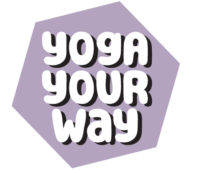Yoga is a multidimensional practice. It’s not just postures and movement (asana), and it’s not just breathing (pranayama). There is a path to enlightenment described in the Yoga Sutra-s of Patanjali (an ancient source text for yoga) called ashtanga yoga (not to be confused with the style of yoga called ashtanga yoga) of which asana and pranayama are only two of the steps on that path. Ashtanga yoga encompasses eight interrelated categories (the Sanskrit word ashtanga means “eight limbs”) that prescribe ways to relate to various aspects of being: Yama-s: relating to the way we behave in the world around us Niyama-s: relating to the way we behave towards ourselves Asana: relating to our physical bodies Pranayama: relating to our breath Pratyahara: relating to how we perceive Dharana, dhyana, samadhi: relating to our field of attention (meditation) My teacher, Gary Kraftsow, has said that the purpose of asana is to prepare us for pranayama, and the purpose of pranayama is to prepare us for meditation. Even if becoming “enlightened” is not in your bucket list, meditation has many proven benefits, as I’m sure my colleague Ray Schaub will tell you. Here are just a few benefits (as listed on the Mayo Clinic website): Managing stress, anxiety, and depression Lowering heart rate and blood pressure Improving sleep Managing symptoms of many conditions, including cancer, asthma, chronic pain, headaches, and IBS. Ultimately, the goal of yoga is to be completely empty of oneself, resting in a state of relaxed, quiet alertness, with clear, unfluctuating mind – i.e. pure awareness (this is samadhi). This takes practice! I’ve achieved that state for a few seconds at a time, only to stymie my effort by thinking – I did it! – which of course destroys it so I’m back to square one. There are several references in ancient yoga philosophy texts (in the Yoga Sutra-s of Patanjali and also in the Bhagavad Gita) that seem to imply that one can approach this state by observing the transitions in the breath – between inhale and exhale, between exhale and inhale, and on the breath holds between. I’ve been experimenting a bit with holding the breath after inhale and exhale. There is a natural silence that seems to occur, at least for me, when I hold the breath. My mind doesn’t try to break in with its intrusive thoughts as much. You might like to try this yourself. Sit comfortably, with a relaxed but erect posture. You can sit on the floor cross-legged, if this is comfortable for you, or you can sit in a chair. Bring your attention to your breath. Breathing through the nose if you can, allow the breath to move slowly downward to the bottom of the rib cage, and then feel the breath moving slowly up and out. Notice the natural, subtle movement of your chest, your abdomen, your pelvis, and your spine as you breathe. Make the in-breath the same comfortable length as the out-breath – perhaps 3 or 4 seconds each. Then start to hold the breath slightly at the end of each inhale and at the end of each exhale. Holding after inhale, feel as though you are still inhaling; holding after exhale, feel as though you are still exhaling. Make sure you don’t clamp down – keep the holds easy and soft. If this breath is comfortable for you, you can start to make the inhale and exhale slightly longer – maybe moving to 4, 5, or 6 seconds. Also start to lengthen the holds (but keep them shorter for now). Make sure as you lengthen the breath that your breath doesn’t become forced or ragged. If you find that happening, back off on the length. As you do this practice, observe the sensations in your body, and also observe any thoughts that arise. As thoughts arise (and they will), notice them and then see if you can send them on their way, coming back to the breath each time. To come out of the practice, shorten each part of the breath, a little at a time, until your breath is back to normal. What was your experience like? Do you notice a stillness during the breath holds? Do you feel calmer and more relaxed? Try to do this practice for just a few minutes each day, and then perhaps as time goes on, you may find that you can extend another few minutes, and then another. |
